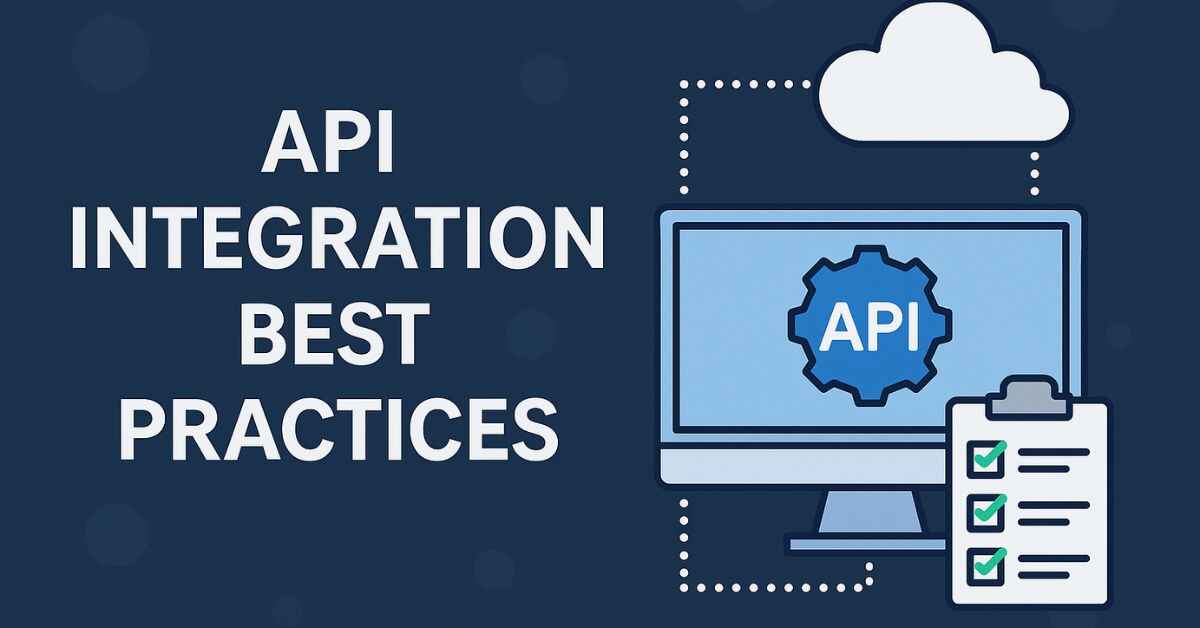|
Getting your Trinity Audio player ready... |
Originally published on Makemychance.com
Working with APIs is a core part of modern web development. Whether you’re building a frontend that consumes third-party services or a backend that connects to payment gateways, CRMs, or other systems — how you integrate APIs matters.
Here’s a solid guide to best practices for API integration. Straightforward, real-world focused, and something every developer should follow.
🔌 1. Understand the API Before You Start
Don’t just skim the docs — read them properly.
- Check the base URL, authentication method, rate limits, and expected data structure.
- Use tools like Postman to test endpoints before writing code.
- Look for versioning (like
v1,v2) so you don’t integrate something that may soon break.
📌 Tip: Always test API responses with both success and failure scenarios.
🔑 2. Secure Your API Keys
Never hardcode API keys in your source code.
- Use
.envfiles for storing secrets in local dev. - In production, keep secrets in environment variables or secret managers.
- Avoid exposing API keys in client-side code (React, Angular, etc.).
// Bad ❌
const API_KEY = '123456abcdef';
// Good ✅
const API_KEY = process.env.MY_API_KEY;
🧱 3. Structure API Calls Properly
Use reusable functions or services to keep your code clean.
// services/api.js
import axios from 'axios';
const API = axios.create({ baseURL: 'https://api.example.com' });
API.interceptors.request.use(config => {
config.headers.Authorization = `Bearer ${process.env.REACT_APP_API_TOKEN}`;
return config;
});
export const fetchData = () => API.get('/data');
This keeps your API logic separate from your UI or controller logic. Easier to debug, maintain, and update later.
⏱️ 4. Handle Timeouts and Errors Gracefully
APIs can go down, respond slow, or throw random errors.
- Always handle errors with proper
try-catch - Show meaningful messages to users (not just
500 error) - Set timeout values to avoid hanging forever
axios.get('/api', { timeout: 5000 })
.then(res => console.log(res.data))
.catch(err => console.error('API failed:', err.message));
🔄 5. Use Retry Logic for Critical APIs
If an API fails due to a temporary issue, try again automatically.
Use libraries like:
axios-retryfor Node/React- Custom
fetchwrappers in plain JS
But be careful — don’t retry endlessly and respect the API’s rate limit.
📦 6. Validate API Responses
Don’t assume every field will be there.
Use optional chaining or validation libraries like zod or Joi to avoid crashing your app.
const name = response?.data?.user?.name || 'Guest';
🔐 7. Use HTTPS Always
Don’t even think about using unsecured HTTP. APIs should always be called over HTTPS to avoid man-in-the-middle attacks.
🧪 8. Mock APIs for Testing
If the real API isn’t ready or is rate-limited:
- Use Mock Service Worker (MSW) in frontend apps
- Use JSON Server or Postman Mock Server for backend dev
Mocking helps you develop faster and independently of the API team.
🗂️ 9. Document Your Integration
Even if the external API has docs, document your usage of it:
- What endpoints are used
- Which headers are required
- What fields from the response are used
It’ll help your future self or team members understand what’s going on without digging into code.
🧰 10. Cache When Needed
If you’re hitting an API frequently (like a weather or news API), cache the results on the backend or in the browser.
This reduces load time, saves bandwidth, and avoids rate limits.
✅ Bonus: Tools That Help
- Postman / Insomnia – for testing APIs
- Swagger / OpenAPI – for exploring API schema
- axios / fetch – for making API calls
- dotenv / cross-env – for managing API keys
🔚 Final Thoughts
API integration isn’t just about calling a URL — it’s about doing it the right way. Write clean, secure, and maintainable code, and your apps will scale better, break less, and be easier to manage.
Introduction to the View Transitions API: A New Era of Seamless Page Navigation
Web MIDI Api Usage-Complete Guide
AI Tools Are Reshaping Development Workflows
Arsalan Malik is a passionate Software Engineer and the Founder of Makemychance.com. A proud CDAC-qualified developer, Arsalan specializes in full-stack web development, with expertise in technologies like Node.js, PHP, WordPress, React, and modern CSS frameworks.
He actively shares his knowledge and insights with the developer community on platforms like Dev.to and engages with professionals worldwide through LinkedIn.
Arsalan believes in building real-world projects that not only solve problems but also educate and empower users. His mission is to make technology simple, accessible, and impactful for everyone.



